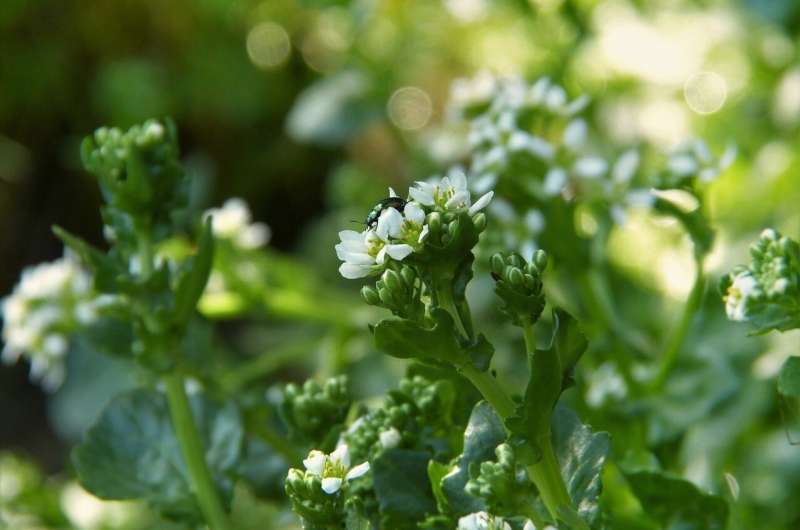New global biodiversity study provides unified map of life on land and in the ocean

New research led by the Monterey Bay Aquarium and partner organizations yielded the first comprehensive global biodiversity map documenting the distribution of life both on land and in the ocean.
The study published today in PLOS ONE offers the most complete picture available of where life occurs on Earth and what the most critical environmental factors are for determining why it's in specific places. The study's authors envision it providing a way to adapt management practices as climate change disrupts ecosystems across the planet.
"Maps typically show us where we are, but this study also shows us where we are going," said Dr. Kyle Van Houtan, Monterey Bay Aquarium chief scientist and senior author. "Previous biodiversity maps show either land or sea with the other area grayed out. We brought these two realms, and these two scientific domains, together to show that all animals are essential parts of an intricate whole."
Determining where species are most abundant, along with charting the patterns of their movements, represents one of the pillars of ecology. But for a long time, such studies have focused mostly on the terrestrial realm due to the greater accessibility and lower cost of sampling on land.
"We are terrestrial creatures, and so we have a natural bias favoring the land," said Dr. Clinton Jenkins, a professor at the IPE - Institute for Ecological Research in São Paulo, Brazil. "However, much of the world's diversity is aquatic, living in the 70% of the earth's surface that is either ocean, lakes and rivers. Our goal is to better understand life on earth as a whole, not just the parts with which we are most familiar."
Through this study, scientists have developed a better and more accurate understanding of where species on land and in the sea occur now, where they might end up moving, and how we can best protect them in a changing world.
"By gathering information on ocean and terrestrial realms, we reconcile two scientific communities with the same objective: to provide a unified and objective portrait of life on earth that has sustained humanity for centuries," said Dr. Gabriel Reygondeau, research associate at the University of British Columbia and Yale University.
The interdisciplinary research team—including NGO, university, and government scientists from the United States, Canada, and Brazil—began by compiling data on more than 67,000 marine and terrestrial species.
Then, the team used artificial neural networks, a branch of artificial intelligence or machine learning, to help explain the observed patterns. This approach allowed the team to document and rank the influence of two dozen environmental factors on the distribution of biodiversity.
The resulting map is the most extensive effort to unify the known distribution of species on land and in the ocean, revealing places that are especially species-rich and species-poor. Coral reefs in the ocean and montane forests on land, for example, are especially diverse, containing more species than the environmental variables alone might predict.
The study also helps identify the environmental drivers that influence whether life will thrive or struggle in the future.
"This helps us document where climate change mechanisms may influence animals most and identify environmental conditions that have more or less biodiversity than we might expect," said co-author Dr. Elliott Hazen, a research ecologist with NOAA's Southwest Fisheries Science Center. "We need to understand the drivers of biodiversity to preserve species within ecosystems that are moving due to changing environmental conditions, and to allow us to take a more dynamic approach towards protecting them."
Now, resource managers working to protect critical habitats and species in a time of accelerating global change can use the study's documenting and ranking of environmental drivers to guide future conservation work.
"National parks and marine protected areas were created to protect ecological communities in stable environments, but what do we do if protected species move beyond these boundaries?" asks Dr. Van Houtan. "Our research has pinpointed the environmental factors that allow such a diversity of life to flourish on Earth and enables a flexible, data-driven approach to protect global biodiversity as once-stable conditions become less predictable."
More information: PLOS ONE (2020). journals.plos.org/plosone/arti … journal.pone.0228065
Journal information: PLoS ONE
Provided by Monterey Bay Aquarium



















